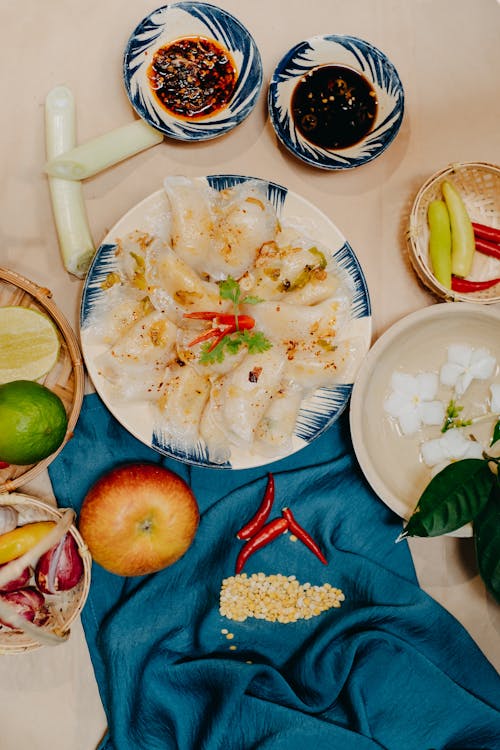Understanding Lighting
Natural Light: Utilize natural light for soft, diffused illumination. Position your setup near a window or shoot outdoors during the golden hours (early morning or late afternoon) for warm, flattering light.
Artificial Light: Use artificial light sources like softboxes or LED panels to control and enhance lighting, especially in indoor settings or when natural light isn't available.
Composition and Setup
Background and Surfaces: Choose backgrounds and surfaces that complement the dish. Wooden boards, marble countertops, or rustic tables can add texture and character.
Props: Select props that enhance the story and mood of the dish. Utensils, fresh ingredients, and tableware should harmonize with the food without overpowering it.
Styling Techniques
Plate Presentation: Arrange food neatly on plates, ensuring portions are visually appealing and balanced. Use garnishes like herbs, sauces, or seeds to add color and texture.
Textures and Layers: Highlight the textures of food through close-up shots. Layer ingredients or use shallow depth of field to create depth and visual interest.
Action Shots: Capture dynamic moments such as pouring sauces or slicing bread to add movement and narrative to your photos.
Camera Settings and Techniques
Aperture: Use a wide aperture (low f-stop number) to create a shallow depth of field, blurring the background and emphasizing the food.
ISO and White Balance: Adjust ISO for optimal exposure without introducing noise. Set white balance to match the lighting conditions for accurate color rendition.
Manual Mode: Shoot in manual mode to have full control over exposure, aperture, and shutter speed, ensuring consistent results.
Editing and Post-Processing
Software: Use photo editing software like Adobe Lightroom or Photoshop for adjustments in exposure, contrast, colors, and sharpening.
Consistency: Maintain a consistent editing style across your food photography to establish a cohesive and recognizable aesthetic.
Tips for Success
Practice Patience: Take time to style and compose each shot meticulously, adjusting props and lighting as needed to achieve the desired look.
Feedback and Learning: Seek feedback from peers or join online communities to learn and improve your food photography skills continuously.
Experimentation: Don't hesitate to experiment with angles, compositions, and lighting setups to discover your unique photography style.




Comments (0)